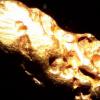Please Help Identify. Can Not Find Anything Like It?
-
Similar Content
-
Rye Patch Nevada Rare Specimen Gold, Crystals, Field Training & Photos 1 2
By Gerry in Idaho,
- gold found
- nevada
- (and 1 more)
- 17 replies
- 1,202 views
-
- 3 replies
- 491 views
-
- 14 replies
- 980 views
-
- 8 replies
- 1,205 views
-
- 5 replies
- 612 views
-
- 15 replies
- 1,984 views
-
-









Recommended Posts
Create an account or sign in to comment
You need to be a member in order to leave a comment
Create an account
Sign up for a new account in our community. It's easy!
Register a new accountSign in
Already have an account? Sign in here.
Sign In Now